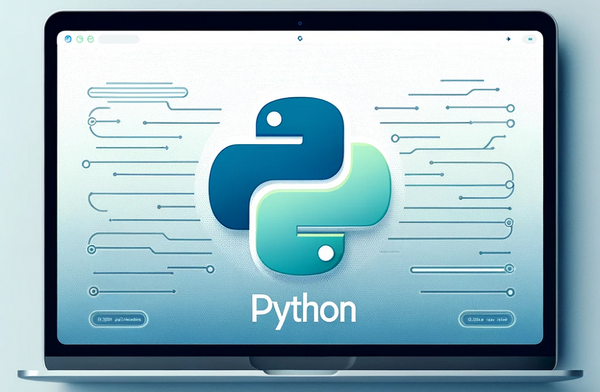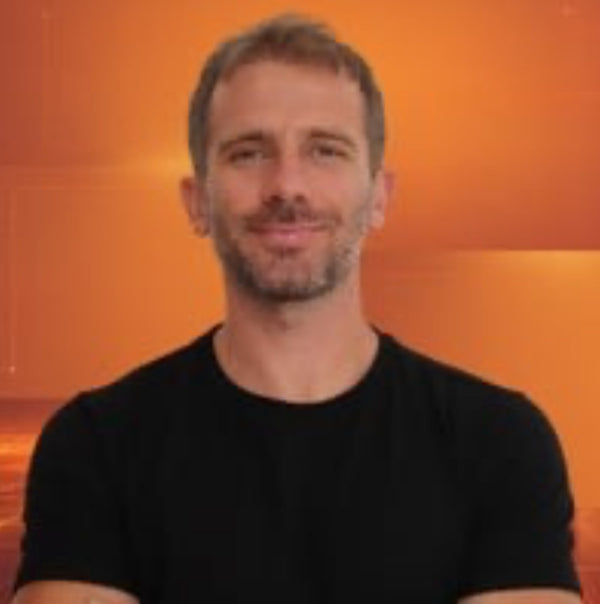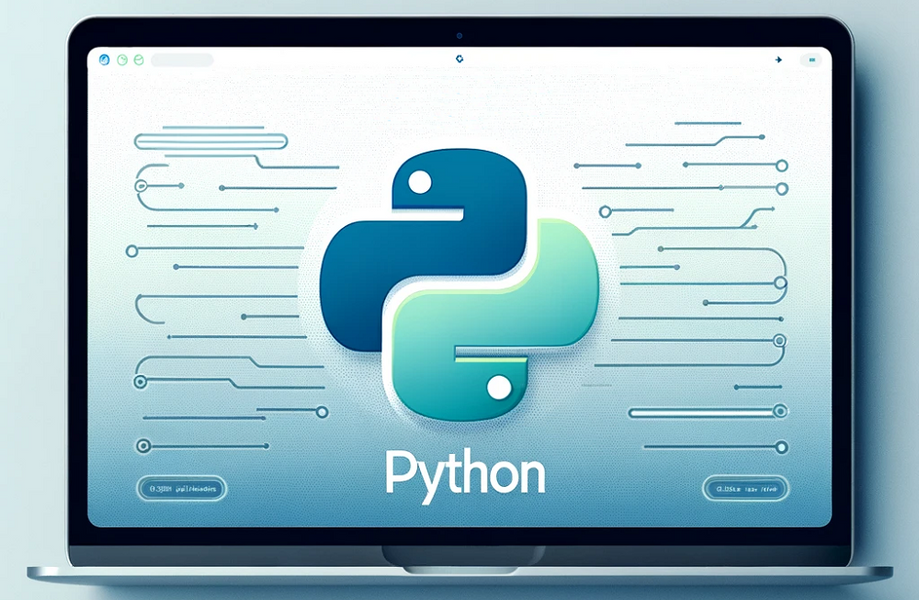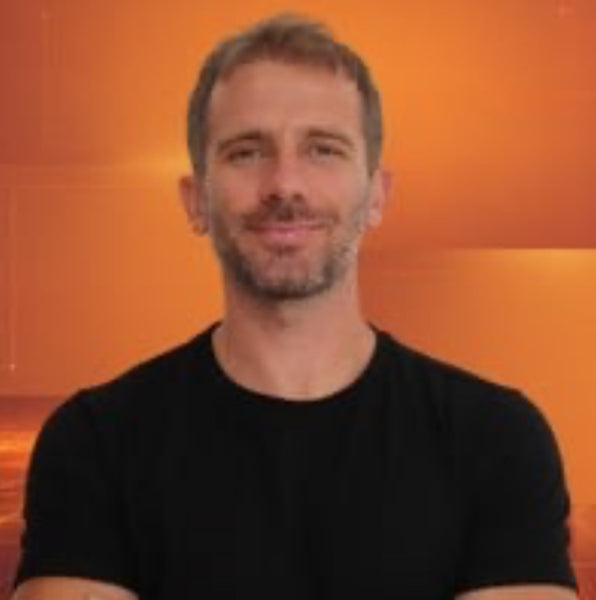Du wolltest schon immer Python lernen? Dann hast du mit unserem Komplettkurs zu Python deinen idealen Einstieg gefunden. Der E-Learning Kurs umfasst mehr als 33 Stunden an Lerninhalten, viele Praxisbeispiele und Anwendungsebenen als auch Tutorials und Übungseinheiten. Mehr zum Kurs in der ausführlichen Detailbeschreibung am Ende (auf Englisch).
HINWEISE:
- Der komplette ist Kurs ist in englischer Sprache (Videos wie Dokumente). Die Kursbeschreibung ist sinngemäß ins Deutsche übersetzt. Die originale Beschreibung findest du weiter unten
- Um deinen E-Learning Kurs bei uns abrufen zu können, benötigst du ein Golem Karrierewelt-Kundenkonto. Nutze daher für den Erwerb deines E-Learning Kurses einfach dieselbe E-Mailadresse, die du auch für das Abrufen des E-Learning Kurses verwenden willst. Dein Kundenkonto ist selbstverständlich kostenlos für dich.
Das wirst du lernen:
- Praxisorientiertes Lernen: Programmierkonzepte werden durch das Erstellen realer Programme vermittelt
- Verständnis der Syntax und Logik: Erlernen der Python-Syntax und des logischen Hintergrunds des Programmierprozesses
- Eigene Programme erstellen: Fähigkeit, eigenständige Python-Programme zu entwickeln
- Bereitstellung und Ausführung: Erlernen, wie Programme auf Live-Servern bereitgestellt und als eigenständige, unabhängig laufende Versionen auf jedem Computer ausgeführt werden
- Umfassende Abdeckung: Der Kurs deckt alle Aspekte von A bis Z ab
Anforderungen:
Keine. Für Quereinsteiger und Anfänger als auch für Personen mit Grundkenntnissen in Python geeignet.
Für wen eignet sich dieser Kurs:
- Anfänger ohne Vorkenntnisse:
- Personen, die noch nie programmiert haben
- Der Kurs beginnt mit einer akademischen Erklärung neuer Programmierbegriffe
- Praktische Anwendung der Begriffe in realen Codebeispielen und Übungen, um das Gelernte zu festigen
- Personen mit Grundkenntnissen in Python:
- Der Kurs ist auch für diejenigen geeignet, die bereits Grundlagen in Python kennen.
- Die ersten 12 Abschnitte behandeln die Grundlagen von Python
- Teilnehmer mit Vorkenntnissen können direkt in die fortgeschrittenen Abschnitte (Abschnitt 13 bis 39) einsteigen
Nach deinem Einkauf:
a.) Logge dich in dein Golem Karrierewelt Konto ein und klicke auf die entsprechende Bestellung. Danach einfach auf "online ansehen" und los geht´s.
b.) Du erhältst nach Erwerb eine Bestellbestätigung. Klicke einfach auf "Bestellung ansehen" und du wirst auf die Checkout-Seite weitergeleitet, die dir dann den Button "zu meinen Kursen" anzeigt. Klicke auf diesen Button und los geht´s.
c.) Du kannst direkt nach Erwerb auf diesen Link klicken: "Meine E-Learning Kurse"
d.) Hast du den Preisvorteil genutzt und Zugänge für mehrere Personen erworben? Bitte informiere alle Berechtigten darüber, dass zum Abrufen der E-Learning Kurse ein kostenloses Golem Karrierewelt Konto notwendig ist. Die Zugangsberechtigten erhalten von uns automatisch eine Einladung zu ihrem Konto und müssen dieses einmalig aktivieren, um die Kurse abzurufen.
Kursdetails (Englisch):
What does this course cover?
The course is exclusively targeted at people who have not programmed before. Therefore, you will learn every programming concept in the context of real-life programming examples by building real-world programs. That way, you will learn the syntax of the language but also understand the logic behind the programming process so you can create your own Python programs. In addition, you will learn both how to write programs but also how to deploy them to live servers and create executable versions that run independently on any computer. The course covers everything from A to Z.
Some people have complained the content is outdated. Is this true?
Some videos are old, but the code in those videos still works with the current Python 3.10 version. Whenever a video is affected by a new Python release, that video is updated with a new one.
Will I be able to find a job after completing this course?
Many students have found a job after taking the course. However, note that simply watching the videos is not sufficient. Besides the videos, you should take all the exercises, plus experiment with the code on your computer by changing it and trying to improve the programs we build. That will give you the skills to write programs independently.
Is this course for beginners?
Yes. This course assumes you have no previous knowledge of programming. Whenever a new programming term emerges in the lectures, we will first explain it academically. Then we use it practically in a real-world code example and reuse it in exercises until you learn everything by heart.
I know Python basics. Is this course for me?
Yes. The first 12 sections of the course cover Python basics. The other 27 sections cover intermediate and advanced Python, and you can jump right into those sections if you know the basics.
What are the ten applications that students will build?
The ten apps covered in the course are: (1) A volcano web map generator, (2) an object detector app that detects moving objects from your computer live webcam, (3) a personal website built with Python and Flask, (4) a book inventory desktop GUI app that has an SQL database backend, (5) a data analysis and visualization dashboard that processes thousands of data records, (6) a mobile app that runs on Android and iOS devices, (7) a program that scrapes data from multiple webpages containing listings of real estate properties for sale, (8) a web app that collects users’ data via a form and sends users emails, (9) a blog and a translator web app with Django, and (10) a web app that processes Excel files and lets users download the processed files.
Can students use the apps to build their own portfolios?
Yes, you can publish the apps in your own GitHub account. However, I recommend changing or adding something to the app to make it unique and reflect your own work. There is always something to improve and new features to add. Changing or adding something new will also immensely help your learning.
How often is the course updated?
If the code in a video does not work because a new version of Python is released or a new version of a Python third-party package breaks the current code, that video is immediately updated with a new one.
How much time will I need to complete the course?
It is recommended to watch 30 minutes of video content per day, followed by two hours of independent work and exercise activities provided along with the videos. The course has 33 hours of video, so it might take around three months to complete it, considering you study five days a week. If you want to speed up the process, I recommend watching up to 1 hour of content, but not more, followed by 4 hours of independent work and exercises.
What if I get stuck?
You can drop a question in the Q&A, and the instructor or the teaching assistant will answer your questions. You can also use the chat in the course Discord server to ask questions and chat with fellow students about Python.
Does this course cover Python 2 or Python 3?
Python 3.
What IDE/editor is used in the course?
We will use Visual Studio Code in the course. However, many students prefer to use PyCharm, Atom, or other IDEs and that is perfectly fine.
Do I need Windows, Mac, or Linux to take the course?
The operating system does not matter. The code covered in the videos will work 100% the same in all operating systems.
Kursinhalt / Content: 33 Sektionen – Lektionen: 352 - Video: > 33 Std.
- Welcome
- Getting Started with Python
- The Basics: Data Types
- The Basics: Operations with Data Types
- The Basics: Functions and Conditionals
- The Basics: Processing User Input
- The Basics: Loops
- Putting the Pieces Together: Building a Program
- List Comprehensions
- More About Functions
- File Processing
- Modules
- Using Python with CSV, JSON, and Excel Files
- Numerical and Scientific Computing with Python and Numpy
- App 1: Web Mapping with Python: Interactive Mapping of Population and Volcanoes
- App 2: Building an English Thesaurus
- Fixing Programming Errors
- Image and Video Processing with Python
- App 3: Controlling the Webcam and Detecting Objects
- Interactive Data Visualization with Python and Bokeh
- App 4 (Part 1): Data Analysis and Visualization with Pandas and Matplotlib
- App 4 (Part 2): Data Analysis and Visualization: in-Browser Interactive Plots
- App 5: Web Development with Flask: Build a Personal Website
- Building Desktop Graphical User Interfaces (GUI) with Python
- Interacting with Databases
- App 6: GUI Apps and SQL: Build a Book Inventory Desktop GUI Database App
- Object-Oriented Programming (OOP)
- App 7: Mobile App Development: Build a Feel-Good App
- Making an Android APK File from the Kivy App
- Web Scraping with Python & Beautiful Soup
- App 8: Web Scraping - Scraping Properties for Sale from the Web
- App 9: Django & Bootstrap Blog and Translator App
- App 10: Build a Geography Web App with Flask and Pandas




